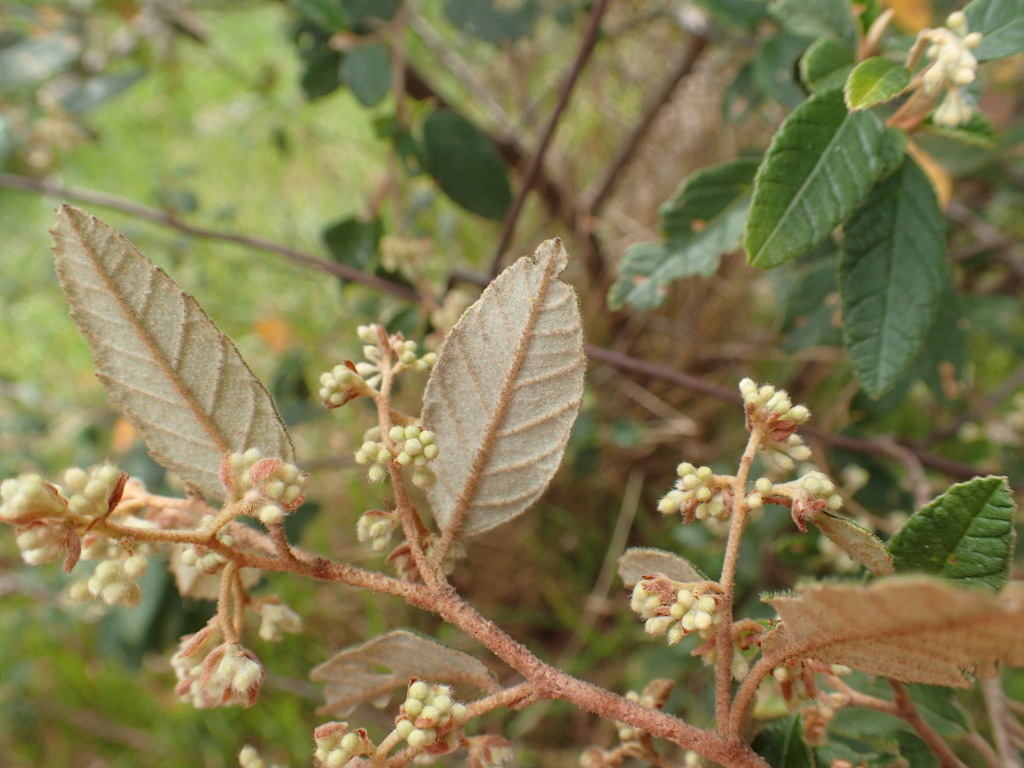Pomaderris prunifolia var. prunifolia
Shrub, 1–4 m high; branchlets with dense, coarse, rusty stellate hairs. Leaves ovate to obovate, 12–80 mm long, 7–35 mm wide, obtuse or acute, obscurely dentate or sinuate, rarely entire, margin flat to weakly recurved, simple-hispid to glabrous above, secondary veins impressed, lower surface whitish stellate-pubescent, with larger rusty hairs over veins; stipules 2–5 mm long, deciduous. Panicles to c. 8 cm long, of several subglobular clusters, each c. 1 cm diam.; bracts deciduous. Flowers cream or yellow, externally pale to rusty, with stellate hairs and longer mid-dense simple hairs; pedicels 1–3 mm long; hypanthium 1–1.5 mm long; sepals 1.3–1.9 mm long, deciduous; petals absent; disc absent; ovary inferior, summit simple-pubescent, style branched in upper half. Operculum membranous, c. half mericarp length. Flowers Oct.–Nov.
VVP, VRiv, GipP, OtP, WaP, Gold, CVU, GGr, NIS, EGL, EGU, HSF, HNF, MonT, VAlp. Scattered in dryish woodland from the Brisbane Ranges eastwards, commonly in rocky sites and rarely distant from watercourses. Occasionally entering the subalps, e.g. near Mt Wellington. Known in the Grampians from a single historic collection (1904).
Pomaderris briagolensis was formerly included in this taxon. Pomaderris prunifolia var. edgerlyi (Hook. f.) L.B.Moore is endemic to New Zealand.
Walsh, N.G. (1999). Pomaderris. In: Walsh, N.G.; Entwisle, T.J., Flora of Victoria Vol. 4, Cornaceae to Asteraceae, pp. 85–109. Inkata Press, Melbourne.
 Spinning
Spinning

